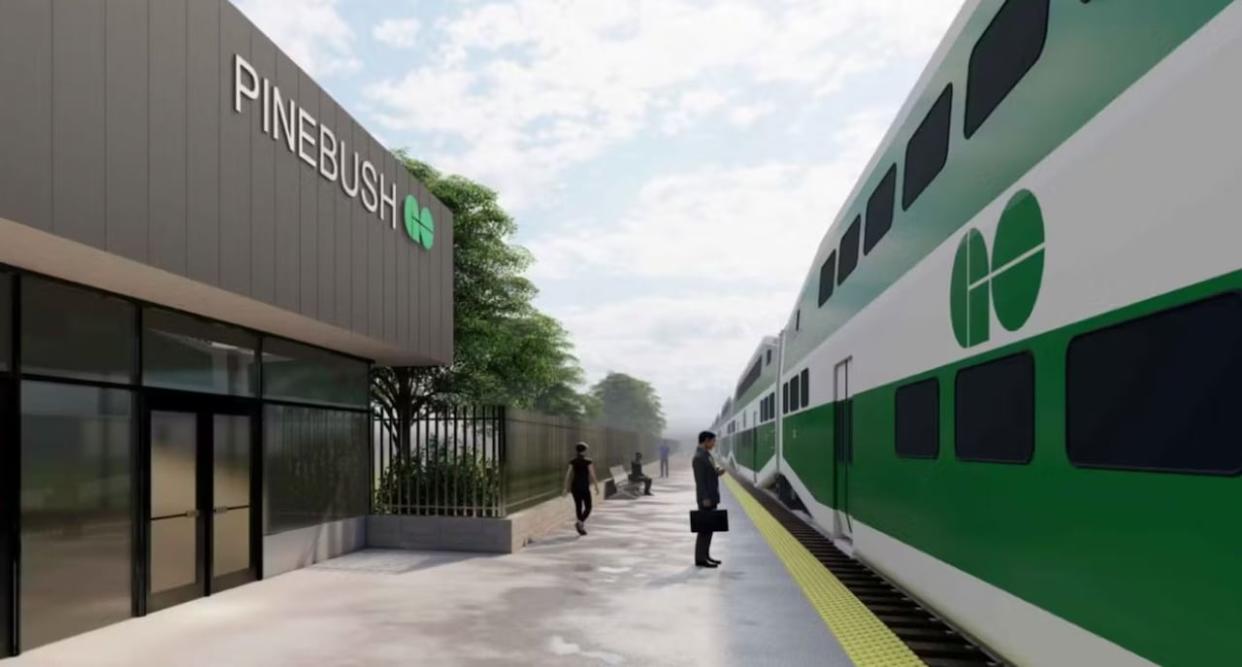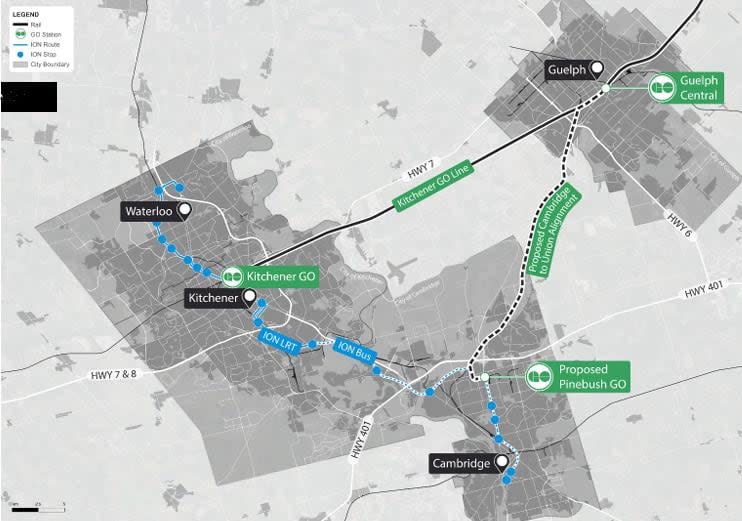Full steam ahead: Cambridge GO train business case gives update at council

The business case for a Cambridge GO station is on track for a possible line into the Greater Toronto Area.
Using the Fergus Subdivision tracks, the line would run from the proposed Pinebush GO station, near Hespeler Road, to Guelph Central GO station where connections can be made to Toronto's Union Station.
Oriana Aguas, the manager of the Cambridge GO rail project, gave a presentation to Cambridge city council last Tuesday.
"At the moment we're planning a service that is hourly or better, so 30 to 60 minutes," she told council, adding that, "the service at this point is about 15 minutes from Cambridge to Guelph."
Aguas said the faster times depend on how many trains are used. The train frequency can also be increased if a side rail track is built. However, if more than one train and track are used, the economic benefits are reduced.
"We found that they're all greater than one," she said. "Which means that all these options are better than doing nothing."
Aguas said the proposed Pinebush GO station would also host the regional LRT line from Kitchener.
The framework for the business case is a seven-stage process. Right now, Aguas said they're in the first two stages: planning and feasibility analysis.
Before the business case is complete, the team must deliver a preliminary design and do procurement preparation. If the case is approved, the next steps are to procure materials and do the necessary construction in order to get the line in service, which is stage seven.
"If everything would be perfect, the product could be deliverable in about six to seven years," she said. "But you can see there's a lot of things that need to happen before that."

A map shows the proposed ion and GO lines going into and out of the proposed Pinebush GO station. (Region of Waterloo)
But regional councillor and former Cambridge mayor Doug Craig said that big projects like these don't come so easily.
"The main issue here is the main issue with all large enterprises — you need strong political support," he said in an interview on CBC K-W's The Morning Edition.
"For this to move ahead, it not only needs the Regional Council and City Council of Cambridge, it needs all the area MPP's to support it."
Craig, an advocate for the Cambridge GO line, said garnering that political support should be a top priority of the Waterloo regional council.
But Craig said he sees some drawbacks to the Cambridge GO rail project, like the price tag.
"There's a number of costs that are involved and we have to be cognizant of that as we move forward."
Craig said he's also worried Toronto-bound travellers won't want to swap train cars in order to get there.
"Once you start asking people to transfer, a number of people will simply not take that as an alternative route," he said.
Craig said he would prefer the trains on the Cambridge line to go straight through Guelph and into the GTA, rather than only ferrying people to and from the Guelph station.
"Cambridge doesn't have an LRT and it doesn't have a GO train," he said. "In terms of bringing it into the same arena as the rest of the region, we need to have the same service level."
Craig said the Cambridge GO rail project team will present before the Waterloo regional council in September of this year.


